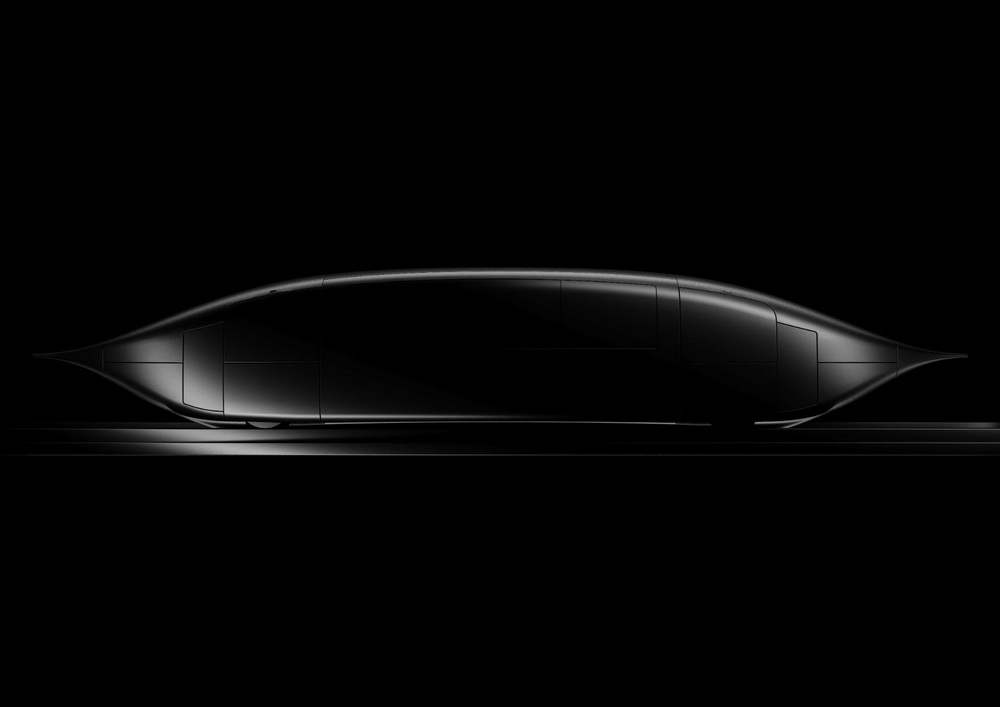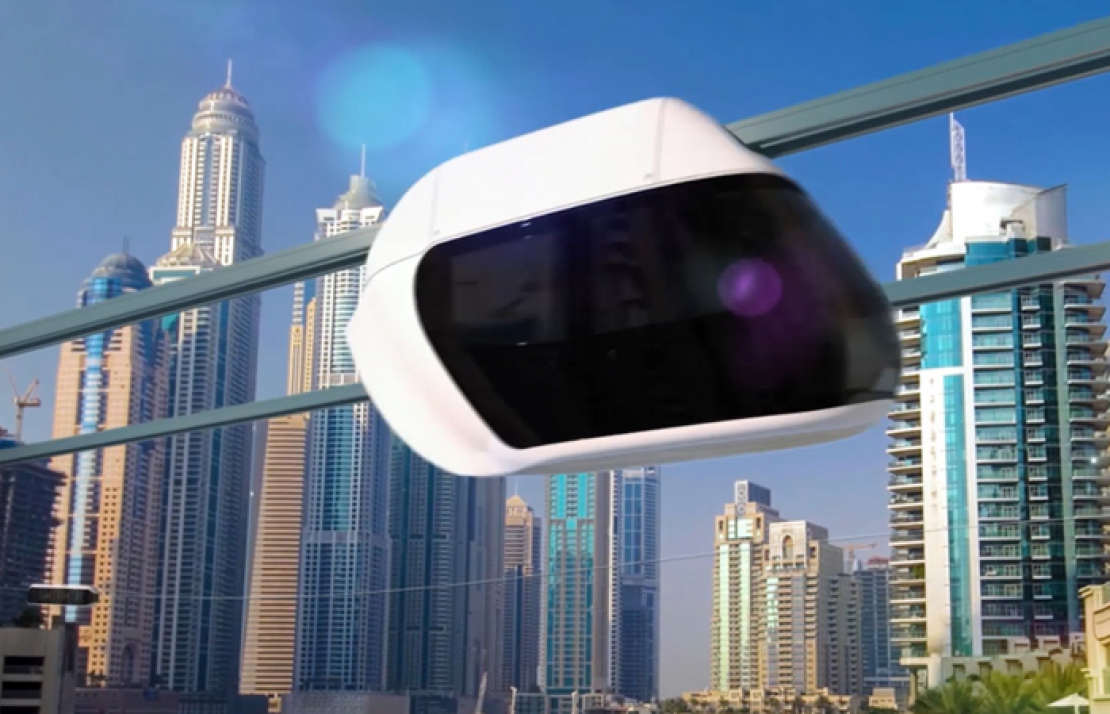UST 2021: General Design Engineer of High-Speed Transport Complex Shared the Company’s Achievements

Another hard-working year in Unitsky String Technologies Inc. is about to end.
We launch a series of interviews to share the outcomes with you. They will be published in full next month, including the interview with General Design Engineer and founder of UST Anatoli Unitsky. This material is a part of the series on our progress in focal areas.

UST Inc. is actively developing the high-speed solution (up to 600 km/h); its technology testing platform can be implemented by 2025.
We spoke to Chief Structural Design Engineer of High-Speed Transport Complex Aliaksandr Kryvitski to learn what results have already been achieved.
Aliaksandr, please tells us what does the Design Office of High-Speed Transport Complexes do?
We develop rail-string transport complexes for electric cars with a speed up to 600 km/h.
We have already implemented the prototype of a high-speed 6-person unibus called the Uniflash which was presented at the InnoTrans 2018 in Berlin. Currently, it is located in the uSky Test & Certification Centre in Sharjah, UAE, and will be showcased at the EXPO 2020.

The high-speed vehicle implemented by UST’s specialists at the InnoTrans 2018 in Berlin
Firstly, the prototype is designed to demonstrate the interior, exterior, comfortability and equipment of the passenger module, as well as design and producibility standards of UST.

Interior of the high-speed vehicle.
Moreover, the Uniflash served the basis for the development of self-propelled chassis with respect to original body design without the interior. It is designed to work out required speed parameters and riding performance of the high-speed rail electric car: ride comfort, acceleration and deceleration of the high-speed rail electric car, which will ensure maximum passenger comfort while travelling on the Uniflash.

The profile of the high-speed vehicle is due to strict requirements to aerodynamics of this vehicle. The relevant indicator achieved by UST engineers is close to the theoretical threshold and equal to 0,06. This is almost 10 times better compared to the most sophisticated cars. Exclusive aerodynamics ensures energy saving. The vehicle consumes just 0,93 kg/100 pass.×km in the fuel equivalent at a record speed of 500 km/h.
As for today, the interior is absent because people are not allowed inside the vehicle during testing. However, the load of the unicar is simulated with process containers that would damage the upholstery upon every loading and unloading. After all tests are over, the self-propelled chassis can be easily fitted with the type of interior which the demonstrator has or by the new design in order to transport passengers.
Over the past year, we have done numerous tests and refinements to improve required safety performance and comfortability for the self-propelled chassis, and hence for passengers.
Aliaksandr, where are your vehicles usually tested?
They are tested in the EcoTechnoPark on a rail-string truss overpass. However, the 900-m track does not allow a speed over 80 km/h.
Can you provide an example of the tests conducted?
Above all, we test components and assemblies of a vehicle, basically, through usual procedures. We check acceleration, braking, hydraulic and pneumatic systems, control and current collection systems and many other systems which comprise a unicar. It is important to note that our final product is not the vehicle but the transport complex. Therefore, we have to study the operation of track structure, anchor and intermediate supports as well as stations and their power supply, automatic control and other systems within the transport complex. For instance, we know that any system can change over time and as part of the experiment to refine movement modes and smoothness of the self-propelled chassis we created artificial unevenness along 150 meters of the track structure.

What new projects are being developed in your design office?
The relevant task is to test the Uniflash at a speed of 500 km/h. To this end, we need to build in Belarus the test track with a minimum length of 22 km. So far, a number of countries have been interested in the construction of such facility and technology platform around it.
We’re negotiating and looking who offers the best terms. This length will be enough for a high-speed vehicle to accelerate to 500 km/h, to refine all movement modes, including the emergency one, and clear the radial section with a speed of 300 km/h.
How much time do you need to implement the high-speed vehicle project?
As I said, now we need to decide on the location. After this issue is resolved, we will launch the construction of the high-speed transport complex. The project will be implemented in 2.5 years after receiving land.
Aliaksandr, what other relevant tasks is your design office responsible for?
We are working on new projects as per the concepts of the General Designer, interests of potential external customers and market demands based on marketing research.
We are in search and elaboration of the best technical solutions that enable to reduce weight and drag coefficient of unicars (UPOD), as well as increase energy efficiency, sustainability and safety.

Due to numerous requests to our organization in terms of targeted projects for urban transport complexes, we allocate a part of our resources with the support of the company to implement these specific projects and we are actively cooperating on the issue. For example, we are participating in the manufacture and design of new passenger urban electric cars and searching for the options and opportunities to unify different-purpose electric cars.
Besides, we are actively working on the “Concept of Fire Safety of Rail-String Transport Complexes”. The “22km” project includes all possible parts for that purpose: anchor and intermediate supports, travel of the high-speed vehicles and urban electric cars over highways, swamps and rivers, as well as under overhead transmission lines, in forests and fields.

Based on this Concept, we will develop justified technical standards to serve the basis for optimal, less resource-intensive and more sustainable solutions for designing buildings, structures, overpasses and unicars, including other parts of the transport complex.
Aliaksandr, can you highlight the key achievements of your office this year?
Colossal project work has been done for the year. We have calculated all energy parameters, minimum required dimensions of buildings and structures for to locate passengers, track structure and logistics as well as developed a brand-new concept of the high-speed vehicle, which is fundamentally different from the Uniflash everybody have seen earlier. The new vehicle outperforms the Uniflash in each key parameter and is being further improved.
Between November 2020 and April 2021, we were developing the priority two-body hinged high-speed vehicle which encompasses two unified single-body high-speed vehicles using traction electric motors and current collection from support wheels. This solution has already been patented.

Besides, we have elaborated the options to achieve utmost comfort of passengers in the interior ensuring minimum length and weight of the high-speed vehicle, including optimal seat adjustment angle, width and length of seat cushions, location of hand luggage and footwells as well as distribution of passengers both against and along the high-speed vehicle’s movement.
Moreover, we are now capable to locate assembled high-speed vehicle in a 40-foot cargo container.
We determined minimum gauges in terms of obstruction and location on stations and platforms, given suspension travel, open doors, emergency cases and maintenance operations.
Since late January 2021, we have analyzed similar railway projects that were earlier developed and implemented.

In addition, we have developed several modifications of the high-speed vehicle with a WC and unified its composition of two identical modules as well as possible positioning of extra modules between them to create more capacious vehicles. Actually, the modularity principle plays a huge role in the design concept of our new product range.
We have also considered the impact of global pandemics on overall transportation by working out single and double isolated interiors with individual microclimate and evaporation systems.
Between April and August 2021, we were working on the priority single-body hinged high-speed vehicle with a passenger capacity of 22 people, central corridor, luggage cupboard and WC. I cannot show you yet how it will look but be assured that it will be novel and beautiful as everything produced in UST.

As I said before, this year has been full of work on aerodynamics through computer modeling and blow-downs in the wind tunnel. We worked out the new rail support systems for wheels and suspensions for the new variants of the track structure.
Today we are working on a completely new configuration of vehicles which can outperform the current one.

What are the immediate and long-term prospects?
Every prospect is immediate. Time flies fast (laughing). I’m saying that as an expert in high-speed transport. Our foremost goal now is to achieve a speed of 500 km/h. Then, we will secure stable operation of all systems and receive first certificates to start changing the world for the better. Nobody has and cannot have any doubt that such transport of ours will drastically transform mobility. You’ll be able to live, for example, somewhere in an ecologically balanced environment and get to work to the city in half an hour. Alternatively, you’ll be able to go on a comfortable trip enjoying scenic surroundings with a bird’s eye view. Furthermore, a trip from Minsk to Paris (about two thousand kilometers) will take just 4-5 hours. This will be faster than by air, given the time spent for check-in and all possible inspections. Thus, we have a lot of work and understand its value so we’re optimistic about the future.

More news

Blog
18 November 2020
Why Is Unitsky String Technologies Inc. Transport Complex Unique? Episode 5
You will get to know the following from the next release of the cyclus about the Unitsky String Technologies Inc. transport complex: how string transport will solve the problem of the “last mile” in large cities, what development shipping traffic will receive from the introduction of Unitsky’s invention in the sector, and how the transfer of energy “without loss” over huge distances is implemented in the technology.

News
18 April 2024
Unitsky String Technologies Inc. Has Passed an Audit of Its Financial Statements
A copy of the document is available here.

Blog
1 December 2021
Unitsky String Technologies Inc. Aims to Strengthen Its Team With Gifted Youth
One of the company’s missions is to search for talented young specialists for their further development into professionals who understand all ins and outs of string technologies. To this end, UST Inc. made a cooperation agreement with the Belarusian State Technological University.

